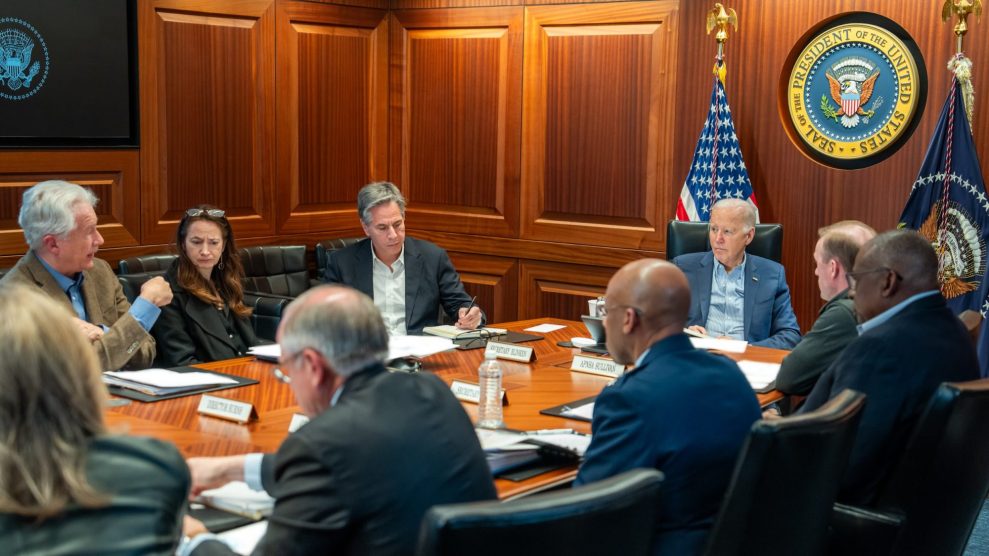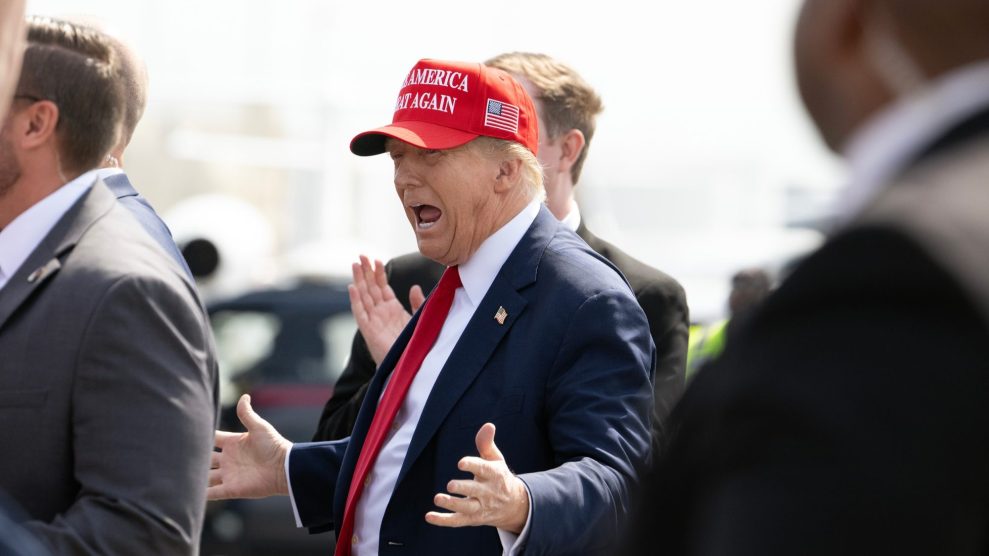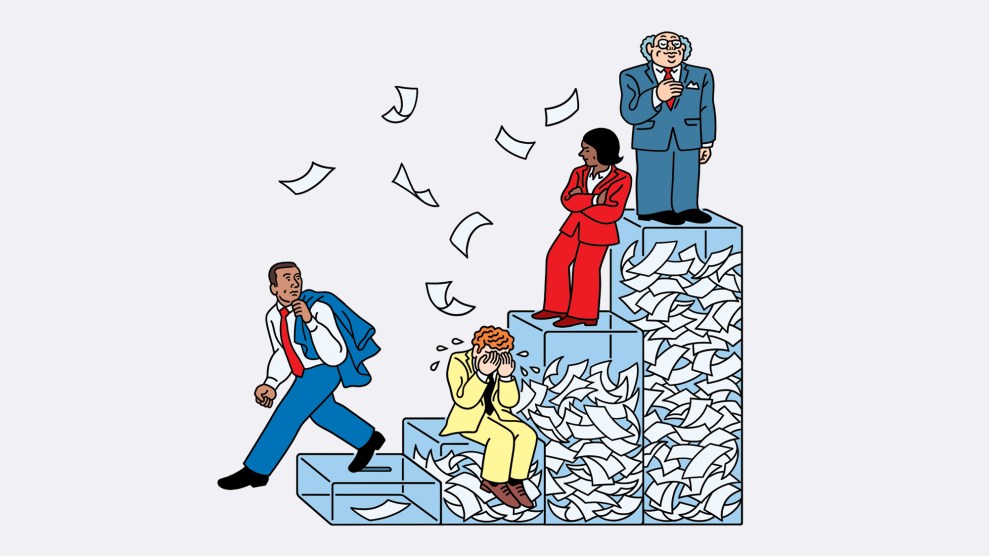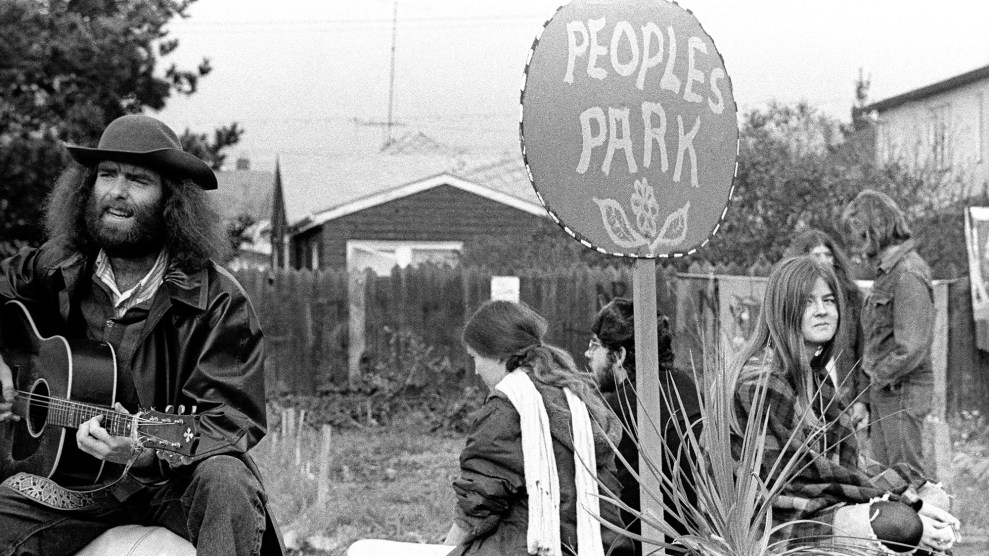Article created by Foreign Policy in Focus.
Nero allegedly fiddled while Rome burned—and then took advantage of the conflagration to build a new palace. Today, in the eastern Mediterranean, George Bush appears to be watching Gaza and Lebanon burn, hoping to rid the area of two surrogates of Iran and Syria and thus create “space” for his great project: a democratic Middle East.
Events caught fire on June 28 as Israeli Defense Forces (IDF) re-entered Gaza in strength to find a soldier captured three days earlier by the military arm of the Hamas resistance. Two weeks after the start of that incursion, another Palestinian resistance group, Hezbollah, captured two more IDF soldiers. A brief IDF attempt to locate and free these soldiers ended when a tank hit a mine, killing four Israelis. Reacting more quickly than in the Gaza incident, IDF airplanes began what has become an ever-widening bombardment, hitting the Beirut airport, key infrastructure in the north of Lebanon, and at least one power plant in southern Lebanon. From the sea, IDF forces began shelling coastal areas of the country. For its part, Hezbollah has been firing dozens of extended-range Katyusha rockets daily into towns and villages in northern Israel, striking further than ever before, from Haifa on the coast to settlements on the Sea of Galilee.
The crisis erupted just before the start of the annual Group of 8 (G-8) heads-of-state meeting in St. Petersburg. After lengthy discussions, the G-8 called for Hamas and Hezbollah to release the three Israeli soldiers and to stop firing mortars and rockets at Israeli cities, and for Israel to cease military operations against Gaza and Lebanon, to withdraw all forces back inside Israel, and release Palestinian government officials arrested in early July.
The United States says that the “intent” behind the G-8 demands is for Hamas and Hezbollah to return the soldiers and cease shelling first, after which Israel would halt its operations. Since the written version of the conditions does not specify a sequence, the remaining summit participants—other than Britain—apparently do not endorse the U.S. interpretation. Nonetheless, the statement avoids dwelling on history and emphasizes the goal of halting the fighting before more people die, more vital infrastructure is destroyed, and the violence becomes self-perpetuating and contagious. Already, more than 250 Palestinians, Lebanese, Israelis, and foreigners are dead, hundreds are wounded, and the three IDF soldiers remain captive—their whereabouts unknown.
Whenever killing flares in Israel and the Occupied Palestinian Territory, all sides—and there always are more than two—blame others for the new crisis and selectively recall the history of past conflicts and oppression to “justify” their use of violence. In this case, the current crisis stems not only from past violence but also from persistent weakness, particularly that of the Lebanese army and the Palestinian National Authority (PNA).
A Tale of Two Weaknesses
In 2000, Israel announced a withdrawal from southern Lebanon. The announcement came after eighteen years of Israeli forces, along with a proxy “Southern Lebanon Army,” maintaining a buffer zone along the Israeli-Lebanese border. In the vacuum created by the withdrawal of Israeli forces, Lebanese police and some army units moved south. But these Lebanese forces were incapable of patrolling the border. The 2,000-member United Nations Interim Force in Lebanon (UNIFIL), created in 1978, continued to report incursions and shelling across the border by Israeli forces and armed militias in Lebanon. And Hezbollah, better armed and more cohesive than the Lebanese army, assumed control of the Lebanese side of the border.
Fast forward to August 2005 when Israeli prime minister Ariel Sharon implemented another unilateral plan: abandoning Israeli settlements and most Israeli military posts in Gaza. Sharon’s initiative, while eliminating some flash points between Israelis and Palestinians, was part of a larger unilateral Israeli plan to build a “separation wall” enclosing and cutting off Gaza from other parts of the putative Palestinian state. As with the pullout of the IDF from southern Lebanon in 2000, the Gaza evacuation was poorly coordinated. It created—predictably—a governance and security vacuum that an economically constrained Palestinian National Authority simply was and still is unprepared to fill.
Under Yasser Arafat and his Fatah party, the PNA was chronically crippled by internal political divisions, cronyism, corruption, and a complete failure to gain control of the instruments of violence that a functioning, effective government needs to survive. (Israel’s systematic destruction of the PNA’s police forces and the crushing of the security infrastructure exacerbated this problem.) Palestinian President Mahmoud Abbas, confronted by the military wing of Hamas on one side and Israeli reprisal air attacks that killed innocent bystanders on the other, has been unable to give the 1.5 million Palestinians in Gaza what they want most: physical security.
Inevitably, this turned the January 2006 parliamentary elections into a referendum on Fatah’s performance. In what was judged a free and fair election, Palestinians rejected the status quo, electing 76 Hamas members or supporters to the 132-seat legislature. The new government, installed in late March, immediately faced a cut-off of foreign aid from the United States and the European Union and the withholding of Palestinian tax revenue collected by Israel and normally passed to the PNA. In effect, Hamas inherited an endemically weak political structure from Fatah.
According to Israel, the PNA is fully responsible for Gaza and for anything that emanates from Gaza toward Israel. But Tel Aviv has made it virtually impossible for Palestinian President Mahmoud Abbas to counter the appeal and influence of Hamas and other militant groups that have become integral parts of the Palestinian social fabric. Abbas and the Hamas-dominated government elected in January may not have to contend with physical occupation by the IDF, but they remain effectively contained and constrained by Israel’s continued control of the Gaza airport, shoreline, border crossings, and revenue stream. In addition, economic hardship in Gaza has worsened. “People are witnessing the first rationing of bread in living memory,” reports Isdud Al Najjar of Mercy Corp Gaza. Eighty thousand families in Gaza are “hardship social cases … About a third of these receive food from the World Food Program. For the rest, there is no longer a safety net.”
Escalating Violence
After his Kadina party won the March 2006 Israeli election, Ehud Olmert faced his first crisis with the deaths of two IDF soldiers and the capture of Corporal Gilad Shalit on June 25 by Hamas militants. That the first direct test for the Olmert government was a paramilitary rocket attack may have contributed to Israel’s decision to try to destroy Hamas and Hezbollah. Since Olmert and his defense minister, Amir Peretz, are the first Israeli leaders without experience at senior military command levels, to apply anything less than maximum military power might leave them open to accusations of being “soft on terrorism”—especially if they turn to negotiations to gain the release of the three Israeli soldiers.
Olmert chose to hold Hezbollah responsible for an act of war rather than act of terrorism. He also chose to hold the Lebanese government responsible for failing to implement UN Security Council (UNSC) Resolution 1559 (2004). Passed on September 2, 2004, UNSC 1559 called for “strict respect of the sovereignty, territorial integrity, unity, and political independence of Lebanon,” the complete withdrawal of all foreign forces, and the disbanding and disarmament of all Lebanese and non-Lebanese militias.
Given the precarious internal “balance of power” among the many political factions in Lebanon, the UN resolution was poorly devised. It threw the entire burden of providing physical security in southern Lebanon and along the Lebanese-Israeli border on a fragile, confessional-based Lebanese government that simply did not have the power to disarm and disband Hezbollah militia forces. In fact, Hezbollah had become so entrenched in the social fabric of the country that the Lebanese prime minister had felt compelled to include two Hezbollah supporters in his cabinet.
All this played out against another backdrop: the departure of Syrian military forces from Lebanon in 2005. Originally, Syrian forces had been seen as stabilizing Lebanon as it emerged from a fifteen-year civil war in 1990. But by 2005, Syrian interference in Lebanese affairs became onerous. The United States and its European allies accused Syria of sponsoring a terrorist organization by serving as a conduit for money and equipment for Hezbollah and Hamas from their chief sponsor—Iran, the second of George Bush’s triple “axis of evil.”
Washington and Tel Aviv see the hand of Iran in both the war in Iraq and the Israeli-Palestine conflict, with Syria as a conduit for fighters, weapons, and money in two directions. Syria now finds itself effectively “surrounded” by Israel on one side and the United States in Iraq on the other, making it susceptible to a “squeeze play.”
The United States and Israel share a similar approach to security. Both have emphasized unilateral, overpowering force or the threat of such force to try to establish absolute security from attack or even intimidation from others. Thus, Washington attacked Iraq because of a presumption that Saddam’s weapons of mass destruction threatened the United States. Thus, Israel’s “separation wall” policy combined Israeli withdrawal from Gaza and southern Lebanon along with the “right” to initiate military action against either area.
Since David Ben-Gurion proclaimed Israel’s creation as an independent state in 1948, the United States has invariably supported Israel’s right to defend itself. The occasional U.S. criticism focuses on Israel’s need to take “proportionate responses” to armed attacks by others. But, as Israeli novelist David Grossman has observed, the modern state of Israel has yet to come to grips with the reality of its overwhelming military power. Its response to any provocation is the application of maximum force, a practice that has never brought it the one thing it craves: peace and security.
The “Bush Doctrine” of preventive war is the expansive, superpower corollary to Grossman’s observation about Israel’s misuse of military might. And like Israel, the Bush doctrine has failed to make the United States more secure in the world just as it has made the world more insecure from the United States The greater irony finds the United States proclaiming it is creating democracy in the Middle East while its surrogate, Israel, is attacking nascent democracies in Lebanon and Palestine.
Perhaps the United States and Israel should try something that neither country is very good at: examining policy from the viewpoint of those who do not have overwhelming military firepower. Looking at the world “upside down” can bring not only a different perspective but a different result as well. It might be too much to expect long-term peace and security right away, but is it too much to ask that the fires be extinguished?















